History of Tech - Part 4 - The 'Red Ring of Death' (Xbox 360 rise and fall)
The Xbox 360 turns 12 years old this November. When it was released, Microsoft eventually took over Sony and controlled over 60% of the market share. But after several years of faithful service to the gamers, the 360 became better known for the 'Red Ring of Death', one of the worst technology failures next to the NES blinking red Light of death. So why did this happen in the first place? No other console has died quite as quickly as the 360, and have lasted much longer than it too. So what's the deal here? Did Microsoft intentionally design it so it would fail just like apple does with its products, through shit hardware or overloading it with software that will cripple it in some way? Why did it effect over a 3rd of the systems? And why did it not destroy Microsoft's hold on the market?
The 360 has 4 led lights surrounding the power button. 1 to 4 green lights indicating how many pads are connected. Green is good. But Red lights you need to worry about.
1red light – you have a hardware failure.
2 red lights – the console is over heating.
3 red lights – general hardware failure.
4 red lights – AV cable error.
The 'Red ring of death' is actually only 3 red lights meaning the 360 has had it
Gaming as an industry now is a Multi Billion dollar deal, and the biggest in technology terms (except military, although that's when gaming as a whole started in the 1940's (that's another history lesson))
Microsoft in the late 90's was hitting hard at gamers, converting them to pc gaming with over half of the PC titles being created, co-developed, digitally signed or distributed by the Microsoft brand. But in early 2000, after Sony's success with the Play Station, they upped the anti, Doubled up on the power, memory, CPU and GPU, they released the Play Station 2.
Microsoft took this release as a threat to their profit as PC gamers went back to Console gaming. Less than a month after the PS2's release, Microsoft announced that it was entering the console market with the Xbox.
The Xbox was rushed through development and with over 12 failed designs and hardware troubles, it was over a year before the Xbox was released, with the PS2 gaining in popularity over the year, and their previous success with its predecessor, the PS2 outsold the Xbox at 2 to 1. this dip in PS2 sales though, hurt Sony in the wallet hard to the sum of 6-7 billion in lost revenue, but still crushed the Xbox in the market, They did out sell Nintendo's Game Cube, so it wasn't all that bad. And the Sega Dream cast? Well they fell out of the market altogether. Sony was still the king of consoles, and it seemed they couldn't be knocked down. By 2003, Microsoft started work on a console dubbed the 'Xenon' that would destroy Sony's popularity and market share.
The Xenon would be the worlds first console that would have an internal hard rive to make it backwards compatible with older, popular titles, it would be the first to be Full HD at 1080p and the first to have a Wireless controller that would also become the industry standard for Microsoft based PC's.
The new console was smaller than the original to help with sales in Japan, but because it had full size PC based hardware, all of the space inside was full, so full the power supply for the console was external.
Microsoft knew that this wouldn't be enough. The one good redeeming quality the Xbox had was 'Xbox Live', so this was completely re-designed and expanded, so rather than going to the store to buy a game, you could now buy through the Xenon and download games direct onto the internal hard drive. Not to mention expanding the Live's server network for better online/multiplayer gaming.
The new Live system would be able to act as a full media player to listen to music, stream movies, connect to a networked PC or Network assisted system (NAS). The software for the Xenon would cost almost as much to develop as windows XP.
Throughout the development of the Xbox's replacement, Microsoft cut corners where they could to keep costs down. They used 3rd party hardware, outsourced production to china and even got the specs from IBM for the PS3's CPU and utilized them in the new console. Because most of the production was not in-house, Microsoft was not able to control the quality of the hardware. Any tiny defects would prove costly for Microsoft.
In the end, over 200 manufacturers and over 1700 parts were used in the construction of the new console that was crammed into a case that was nearly half the size of the original.. this was a logistical nightmare that initially proved to be an unforeseen problem for Microsoft.
In May 2005, Microsoft announced the now re-named Xbox 360 on a cringe worthy MTV show to encourage its audience to buy, boasting about its new live features, gaming ability and media centre style software. Only a few days later at E3 (reportedly costing over 20 million), Microsoft held a lengthy sceptical to announce they would be releasing the sale of the 360 before Christmas 2005.
Not to be out done, At the same E3 show, Sony also announced the release of the PS3 by March 2006.
3rd Party manufactures Microsoft hired started to struggle to keep up with the demands and quality control Microsoft wanted. The 360 wasn't properly debugged, with only 5000 machines out of 20'000 thoroughly tested as the final product was rushed through.
The Manufactures sent reports to Microsoft of potential problems. GPU over heating, motherboards warping, components solder dripping off onto other parts, heat sinks cracking on the CPU. The main problem was heat, the slim case combined with crammed together tech would be fatal to the 360 and buy august 2005, only 2 thirds of the consoles made would make it to stores as the other third already suffered the red ring of death and were destined to be destroyed and pulled apart for spare parts, but Microsoft ignored this advice and problems as they pushed forward to meet the release date. The manufactures urged Microsoft to push back the release by another 6 months so they could improve the airflow and design of the console, but Microsoft declined and took a gamble with the consoles that were working, and released them anyway.
Continuing the Hype that Microsoft were creating and fear about the final product being faulty, they never announced the release date until just 2 months before November 22nd when top brass final made the decision and said they were confident the product is ready. But less than a month before release. Microsoft did not have enough units to meet the Christmas time consumer demands, meaning it would be sold out prematurely. Retailers were reporting that they would only be receiving less than half what was ordered, confirming the poor yield rates thanks to the manufacturing and quality control problems. But eventually after hiring more manufactures and factories a month before release, yield counts started to improve over the next 2 months.
On November 22nd the Xbox 360 was the first 7th gen console to be sold world wide, ahead of Sony's PS3, making it the only console people wanted to buy and by January 1st 2006, over 1.5 million units were sold. Still unable to meet the demands of retailers, the 360 started to sell out and consumers became increasingly frustrated as the only place to buy them was on eBay at over double the original retail price.
Microsoft rushed the 360 to be the first next gen console on the market, but Microsoft were receiving a lot of complaints about systems failing after only hours of use and others not working out of the box, Microsoft announced this is in the expected range of what they expected.
With issues that would bankrupt other consoles makers, Microsoft had deep enough pockets to take the hit as they were not making any profit from the 360 when it launched onto shelves.
Ongoing problems with the development of the PS3, namely it's Blu-ray drive, Sony pushed back the launch date to November 2006, a full year after the 360, and buy this time, Microsoft had more than doubled it's ability to supply retailers world wide. There were plans on the 360 to lower its price, but after a disastrous unveiling of the PS3 2006 E3 and a price tag of $600, Microsoft stuck firm to the price tag.
In the 6 months after the 360 Launch, over 3 million units were sold, but its faulty units they discovered before shipping had grown to well over half a million. Microsoft were asked about faulty units which they said were ''isolated incidents'', they did admit to some minor heating issues when asked about the 360's loud fan.
To help compete with the release of the PS3 and Wii in November 2006, Microsoft released 2 updated versions of its console. The 360 elite which had a much bigger 120gb drive and full HDMI capability selling at $450 and 360 arcade which had a cheaper motherboard and less powerful GPU selling at $300. Microsoft were becoming unstoppable.
Instead of focusing on correcting problems and low unit counts because of the faults, they were always focusing on future projects, meaning that the faulty consoles were pouring through the cracks and more and more consumers were complaining there prized possession died.
By the time the PS3 was released, hundreds of YouTube videos surfaced with the red ring of death. Unable to find a direct problem or pattern with the faults meaning the quality control from the 200+ manufacturers, was lacking and the general hardware fault was something that Microsoft could no longer ignore. They announced that any consoles manufactured in 2005 would be repaired, replaced or reimburse, but this was only 1.6 million units compared to the 6million plus that were out there, potentially a ticking time bomb.
Due to the steady stream of quality games and the continual updating of the Xbox live kept consumers happy and in December of 2006, Microsoft sold a further 1.5 million units compare to the PS3's 500 thousand. But the PS2 was till selling strong at 1.6 million units in December, pushing it to over 210 million PS2's sold since 2000.
In January 2007 after receiving an alarming number of returned consoles, Microsoft finally made the decision to stop production of the 360 and sell off the remaining inventory at a loss. This was as many people assumed, so that they could investigate the problem that by now became known as the red ring of death. But no matter what they did, it was all down to so much tech in a tiny space creating too much heat. The problem behind this, is that they designed the case first to appease the Japanese consumers then crammed in as much tech as they could, there was no way to correct this without redesigning the whole thing that made the 360 as popular as it did.
So to help expand the life span of each unit the inside had been changed significantly, better heat sinks, better airflow over culprit chips, epoxy over certain chips, less parts and smaller parts, but the case its self remained unchanged. So the problem was still there and with 12 million units is circulation that could fail at any time.
To keep the brand alive and popular, in may 2007 Microsoft's new units will come with a full 3 year warranty and they will pay for shipping to replace any failed units. This dramatically reduced the amount of 360's that were returned faulty. They also struck deals with even more game developers to create games exclusivity for the 360.
Despite all the issues, the new units and new warranty, the 360 remained king for a further year holding over 60% of the market.
To this day there are still 360's out there that are still working, and will remain working if they are used in proportion, i.e., turned off after a few hours of gaming. But they are all still doomed to fail with the red ring of death ready to pounce at any given moment.
Thanks for reading.
Stu @TechMojo
Images...
http://www.scottbruno.com/XBOX-360-RED-RING-OF-DEATH-FREE-CODES-FIX-SOLUTION.htm
https://www.gamasutra.com/view/feature/130758/interview_astro_agogo_.php
http://www.listal.com/viewimage/1261884
https://www.amazon.co.uk/Xbox-Elite-Console-120GB-Drive/dp/B002YIHJNC
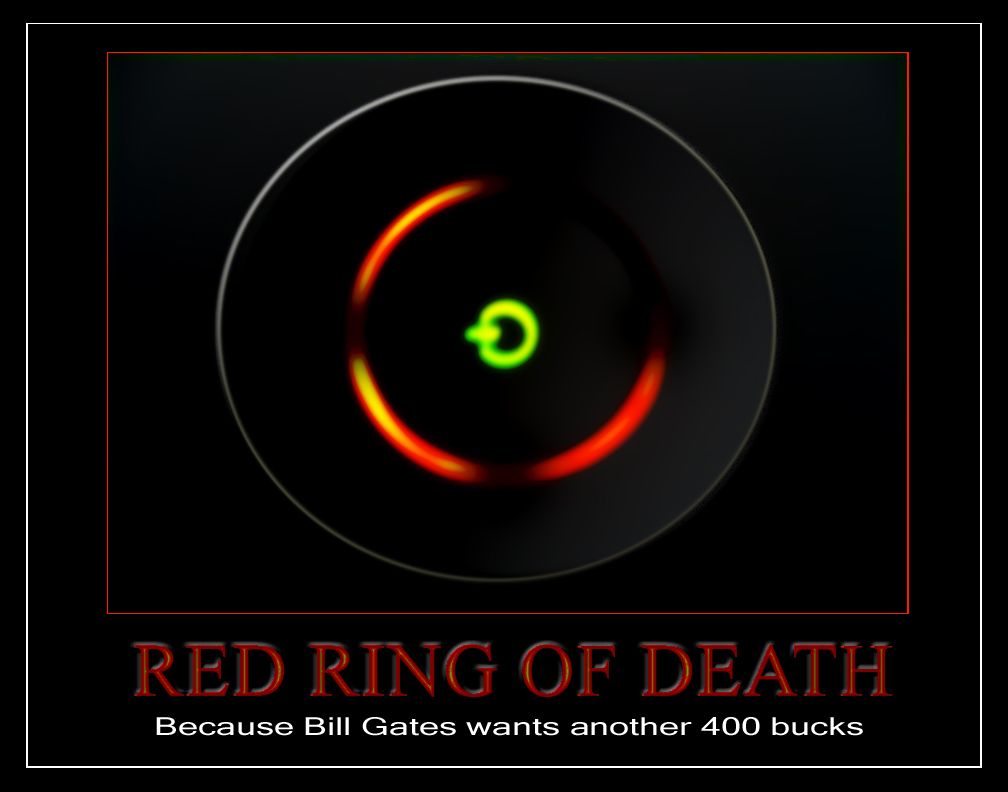
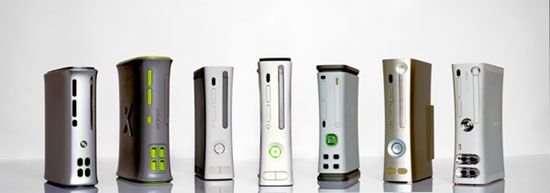
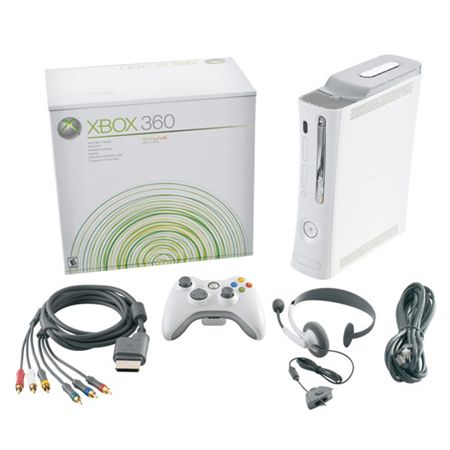
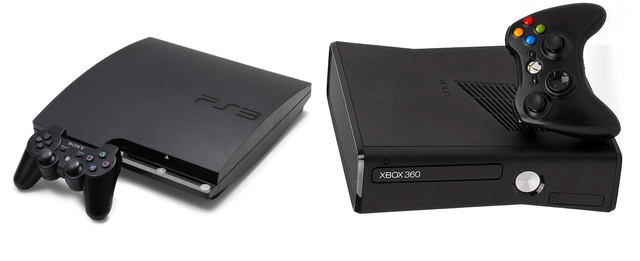
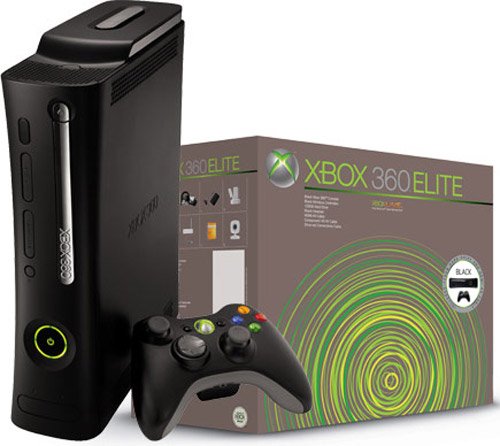

Hey @techmojo,
Sorry to hijack your comments, but - I just sent you an email via the form on your site. I'm trying to invite you to join Steemit's premiere user incubator, @sndbox, which basically means you would receive one new $30 upvote per day and join a community of other ambitious, awesome Steemians.
Your content is awesome, I've been loving it. I spoke with the founders of the incubator and they agreed that you would be a good person to invite.
If you are interested, please respond to that email when you have the chance. And again, sorry for putting this in your comments - not sure how else to reach you!
Best,
Matt
no worries buddy. to be fair i havnt checked it out as iv not longed moved house so still unpacking all my crap and setting up the rest of the tech in the house. (and ive not been on the site since i set it up a couple of month ago) but will look into buddy and thank you very much.
Thanks man, sounds good.
This post recieved an upvote from minnowpond. If you would like to recieve upvotes from minnowpond on all your posts, simply FOLLOW @minnowpond